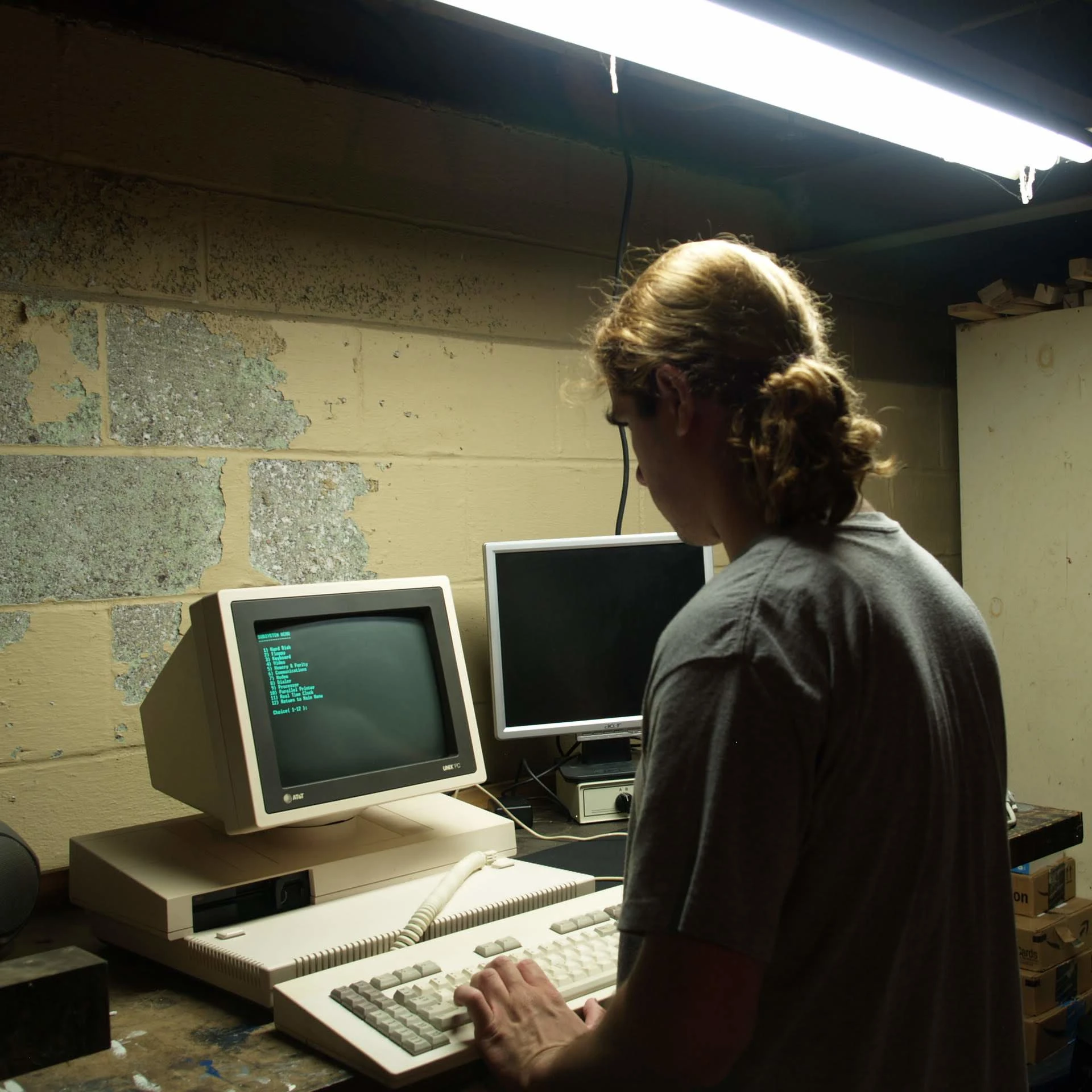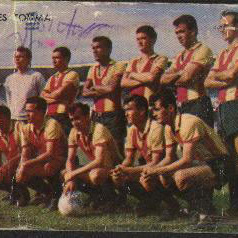Highway spending increased by 90% in 2021. This is one of many reasons why car traffic is growing faster than population growth.
Relevant xkcd:

50 people pureed and pressed into high-protien calorie-dense tiles:

It’s always relevant!
Imagine seeing 69 random strangers walking down the street, densely packed in like that, for no reason. Just comin at you.
Finland: Oh look, tourists.
Are you saying that you DON’T walk that close to other pedestrians?
You’ve never been outside your tiny town, have you?
A lot of those “highway programs” include things like removing barriers to aquatic organism passage, reducing congestion and emissions from the movement of cargo, and other things that don’t suck. It’s still weighed too heavily in favor of cars and highways for sure, but there’s more getting funded by the IIJA & IRA than just, like, freeways.
Reducing congestion is mostly attempted by building and expanding highways, which is proven not to reduce congestion. The vast majority of the budget is spent on building and expending highways.
Are you not into
trainstrams?Does that make him tramsphobic?
We can’t be all trampholic (wait, why not?)
That’s WRONG! That’s not how autonomous cars work!! They are AUTONOMOUS that mean you can get rid of (at least!) half the people and still have as many cars!
They are AUTONOMOUS that mean you can get rid of (at least!) half the people and still have as many cars!
Cruise’s robotaxis created a traffic jam in Austin, here’s what went wrong
According to the team at Cruise, the fleet ended up in a high-demand area, which also brought with it a slew of pedestrian and passenger vehicle traffic. As you can see in the video, one of the Cruise vehicles got stuck in an intersection while committing to a turn, thus further congesting traffic in three different directions.
Unfortunately, more and more Cruise robotaxis flooded the narrow Austin street to meet the peak demand, only to join in the traffic jam. But why were there so many robotaxis in this one specific area? Cruise states that at the time, there were limited routes going north and south through the city, and a detour from an alternative route led the EVs to the same doomed parkway.
Unfortunately, Cruise could not manually reroute the vehicles quickly enough, so there was nowhere for them to go.
Unfortunately, what you end up with automation is often more of a thing than what you actually need, as surplus saturates the market even when it isn’t desired. Rather than a single dedicated lane operating at maximum available capacity on a predictable schedule, you get a flood of functionally independent actors all congregating within a small area in an effort to maximize individual revenue.
Autonomous means you get more cars than there are people all contributing to the traffic that the people are looking to escape.
Agree. Transportation is a problem of flow maximisation. We won’t optimise the circulation in our system if we flood it with transportation machinery instead of focusing on the people.
Ah, but congestion creates scarcity and drives up prices. So there’s a perverse economic incentive to flood the system with machinery.
There is also an inventive to buy people expensive truck as personnal vehicule but I believe that people in this community are willing to look at the externalities.
While I’m a strong proponent of reducing and possibly eliminating car use, this image is disingenuous. They neatly packed 69 (nice) people into a medium bus, sure. But when showing cars, it’s almost 1 persons per car (I counted 15 cars in a row and there are 4 rows, so 60 cars). You can definitely use cars more efficiently than that.
Assuming that actually autonomous self-driving cars exist, they could be extremely efficient. Especially if you treat them like ride sharing taxis. In other words, a lot of people could share the same car and that would reduce the amount of owned cars. They also never waste space being parked. So I can see how when we make a real self-driving car, it can potentially reduce traffic. Especially for all those cases where public transportation doesn’t work.
And what the heck is a “connected car”?
Two facts:
- The average occupancy of a car in my North American city is 1.2 people per car. This does not vary much by city.
- Autonomous vehicles will almost certainly be worse for traffic than human driven cars. They will circle empty with no passengers and drive to pick up passengers empty (dead heading) even with a fully rideshare system. If there is widespread private ownership of autonomous vehicles (and you bet your butt that car companies will campaign for this aggressively to keep sales up), the dead heading problems only multiply. If you don’t believe me, look up any recent literature on the topic: by most accounts it will be worse, not better. Dead heading is only the tip of the iceberg of problems there.
- The average occupancy of a car in my North American city is 1.2 people per car. This does not vary much by city.
- Autonomous vehicles will almost certainly be worse for traffic than human driven cars.
-
Is that for rush hour? Because, overall, the national average is closer to 1.5
-
Fully agree.
- How so? Wouldn’t autonomous cars disincentivize car ownership, meaning fewer cars that can be on the road?
See the argument of induced demand: “Oh everyone is using self-driving cars, that means there’s more space for my car!”
I’m not a car owner, so I might be wrong. But I don’t think it’s normal for people to decide owning a car based on whether or not there’s room for it.
Also, I think they meant that self-driving cars that will be taking non-owners to their destination. Since there’s already a car that’s taking me, I don’t need to buy my own.When people feel there’s more room for cars/infrastructure is more hostile to walking, they are more inclined to buy and use a car. That’s why adding lanes to highways never works to reduce traffic. You are not making more space for the same amount of cars, you’re inducing non-car owners to switch and get one, or already existing car owners to use it more, resulting in more cars in circulation.
Similarly, autonomous cars are perceived as taxis which people irrationally perceive as emotional license to acquire and use a car. Narratives like cars as freedom or tech companies coming to take your car.
Sure, it is counter intuitive, but there’s a billion dollar marketing industry dedicated to exploiting this and other similar cognitive biases. See green washing and the use of recycling to promote further consumerism. Or using health labeling to keep unhealthy foods in high demand, etc.
The problem you described sounds more like a side effect of the core issue – corporate greed. Cars can be bad, and overuse is a problem, but let’s not blame them for the faults of the system. Until the core issue is fixed, nothings will be truly efficient and useful, because those aspects will be sacrificed to profit.
And what is the average occupancy of a bus in your North American city?
Regarding your 1st point, yes, it is a problem that cars are underutilized. So I think that in addition to promoting public transport, for the time being, we could also promote proper usage of cars. Here in Europe, we don’t have much problems with cars compared to US, but oh boy you guys overseas need to tame your F-150 owners.
Regarding the 2nd point, it’s not a fact but an opinion. With which I don’t really agree. I believe that true self-driving cars will eventually surpass the capabilities of meatbags, but I will look up the literature. Solely based on what you said, it seems to me that the “dead heading” problem is just a logistical issue that can be solved using science/technology (if the fleet of cars is algorithmically dispersed enough, they will always pick up a nearby passenger, as a hypothetical solution).
But yes, the corporations remain an issue and they will surely find a way to mess everything up. That is a separate problem that also needs solving, capitalism and overconsumption.Regarding your first point, I’m aware that that is the unfortunate truth. That IS the issue with cars when it comes to efficiency.
If you load the car with 3-5 passengers it easily beats busses in efficiency, according to my calculations. But that’s not gonna happen.Regarding your second point, the core of the issue is just capitalism, not self-driving cars or privately owned cars.
Cars don’t have to drive around empty if they are some sort of shared transport that can pick up the nearest passenger.
If companies aren’t gonna cause unnecessary car purchases only those who need them anyway will own them.Basically, the problem with cars is not cars themselves as a concept, it’s the overuse and misuse. But unfortunately, that isn’t changing anytime soon.
If you load the car with 3-5 passengers it easily beats busses in efficiency, according to my calculations.
Huh? If you’re being very generous you can fit 3 cars into the space of 1 bus. A bus can definitely hold more than 15 people.
I have already rescinded that decision in this comment. But I wasn’t comparing the volume, I was comparing the amount of useful work done relative to the weight. If you wish, the details are in the linked comment.
Basically, the problem with cars is not cars themselves as a concept, it’s the overuse and misuse. But unfortunately, that isn’t changing anytime soon.
So true, extra emphasis on the misuse in the US. I was recently in Iceland, which is a very car centric country, and I was amazed by how much better their car situation was. They kept their roads nice and tight, used roundabouts, they had 30kmph(18mph) speed limits in residential and city centers, raised sidewalks, etc. Best of all most people drove small cars! It was the first time I enjoyed driving and didn’t mind being around cars because I actually felt safe.
But then I got back to the US and it was disgusting how wasteful we are with our car infrastructure. Instead of 9ft car lanes our lanes are 12ft minimum often with 8ft buffers. Even small suburban streets are 40 to 50 feet wide. Our parking lots look like lakes of asphalt, and our intersections are so fucking huge there is no safe way for a kid to use them
Even being generous with using SUVs, a really small bus can fit 30+ people, in the same space that would occupy two SUVs with less than 10 people combined.
Yeah, I already crossed out that statement. See details here.
Would love to see those calculations.
Every panel is flawed
People don’t walk that closely together
People don’t bike that closely together
Only a double decker bus could fit that many people without cramming people in like sardines
Moving cars should obey a safe following distance, so unless traffic is gridlocked, they shouldn’t be that close either
Bikes even if not packed as closely massively decrease the total volume. Even if they were all riding all after one another on a bike lane it would be miles shorter than cars on a road.
And as for the bus… I have been on busses that full. You clearly have not travelled peak hour traffic on a busy route. Just look at any Japanese or Indian train to see how space efficient they are able to transport petiole
Just look at any Japanese or Indian train to see how space efficient they are able to transport petiole
“Space efficient” is a very kind euphemism for “being packed cheek by jowl and smelling what everyone had for lunch.”
Just add more buses in that case. This is the good kind of induced demand.
Even then, in a well designed city, there are enough viable alternatives when buses get too crowded (walking, cycling, trains, even a slightly different bus route).
I’m just saying that if you want people who don’t take transit to consider it, do not praise a system that requires workers to cram people forcefully into subway cars, even if it does more than double passenger capacity.
Yeah public transit is for ugly disgusting poor people!
/s
I know plenty of ugly disgusting rich people and would also not like to smell them or feel them rubbing against me.
Things being close together isn’t really an issue here because it’s just meant to visualize the volume. They are not trying to paint a realistic scenario, I don’t think.
I’d argue against that.
The concept of robot taxi sounds nice, but it devolves into an unsustainable mess. Ride sharing isn’t simple, especially when we talk about uncertain way points. Meaningfully matching cases where people can share a robot car with completely random drop off is a logistical nightmare. I used to work at a Ride hailing company as an analyst, and people being unhappy with the duration of the shared ride was the biggest issue for that category (removing for generic cases like payment issues).
Additionally, I’m sure it’s going to be a safety factor. I’m unlikely to get into a car with a random stranger when there’s literally no one else in the car. Miss me with trusting some corporate with safety in such cases.
I’ve done ride shares a few times with Uber and it went pretty well. Basically it only worked from downtown to the airport, as the only scenarios with similar routes. Maybe a sporting or music event would be the same, I don’t know
I’m not sure what you mean here by Downtown.
But again, if all you’re looking for is a good transport system from one high population density area (airports almost always are) to another high population density area, you’ll be better served by having a reliable and decently fast metro train or the likes, than a cab, as long as people don’t mind walking for 5-10 minutes from their closest stop. If that distance is higher, by all means taxis are amazing for last mile connectivity. But expecting cars to solve public transport at large has always looked like a losing battle to me.
Boston. I’ve gotten shared rides between downtown Boston and the airport but that’s the only scenario where I’ve been able to
It’s also a bit of a cautionary tale on transit, because Boston managed to screw that up with too many connections making it take too long.
- Subway. But only the blue line, no connection to red line, and you need to transfer to a bus.
- silver line. Connects to red line only. Glorified bus, drives in regular traffic.
- park and ride - no overnight parking.
- AirPort Express bus. Only serves outer burbs
If I want to goto the airport from my home in the inner ‘burbs:
- commuter train is up to 2 hours apart, limited hours. Can head into town, walk a block or two to the blue line, wait as long as 20 minutes, take that to the airport. Wait up to 5 minutes for a shuttle, take that to the terminal. Not practical.
- drive to red line. No overnight parking. Wait up to 20 minutes for subway, take it to silver line. Wait up to 20 minutes. Get stuck in traffic in the tunnels. Not practical.
I have lots of great transit options but none that connect smoothly and frequently enough to actually use. This is better when living in the city but still all the connections and delays turn what should be a great transit experience into an impractical one. I’m going to end up driving to the airport every time (up to three day trip or Uber for longer)
Never been to US, so I won’t comment on the specific infra.
However, I have lived in multiple cities, and have seen multiple cities build their metro networks from scratch in 20 years. And they’ve been absolutely over and beyond what could’ve been achieved by any improvement in car infrastructure, apart from demolishing entire houses and shops to expand the roads on both sides.
Thank you, that is a very interesting insight. But besides sharing cars in parallel (multiple passengers at once) there can also be sequential sharing, which is, I understand, a regular taxi without a driver. But I think that high availability of cars like that, which are cheap, would still reduce the amount of car owners, and consequently increase public transportation utilization.
Why do something that complicated when bus and tram lines are way more efficient? Cities need to take the money they apend on subsidizing car ownership and invest it into mass transit.
Because trams and busses can’t fulfill every need. Certain point to point transportation options still need to exist, we just need to make them as efficient as possible.
And as I mentioned in another comment,
turns out busses aren’t really as efficient as I thought they were. Fully packed small cars are way more efficient.Edit: Changed my mind. See previous comment.
Most cars only ever have 1 person in them, 2 occasionally, and rarely ever more than that inlesst it’s a damily trip somewhere. A bus with 5 passengers is taking up less space than 5 cars of any size. Even in mass transit Meccas like The Netherlands obviously still have private cars that people use. But designing transport infrastructure around more efficient methods allows for use cases where a personal car iis necessary fleeting. Obviously moving trucks and delivery vans can’t be replaced by a tram. But a well designed city wouldn’t require me to drive my car just to pick up eggs and a loaf of bread, or to get a beer at a local bar, or go to a baseball game.
Sequential sharing isn’t sharing. That’s how any cab operators functions.
The problems you’re mentioning aren’t problems with human drivers, but the problems with perfect allocation. Robo taxis won’t solve them.
The solution would be autonomous single seat cars, similar to the podbike. They would only be like ~1m wide (3 feet) and could use mostly bicycle transmission hardware and be extremely aerodynamic at commuting speeds.
Without needing steering you could also do two seaters with seats that face each other, so could also be low to the ground and narrow for aerodynamics.
The majority should still be bus or tram or train but autonomous cars could unlock a lot of possibilities because they fill the gaps. We just haven’t seen the “correct” design for autonomous robo taxies yet.
The solution would be autonomous single seat cars, similar to the podbike.
Interesting proposal. I think that a single-seat vehicle will inherently be too inefficient cause you need to have all the infrastructure, but you carry only 1 person. 2-4 passenger vehicles would probably still be most optimal.
But yes, I do believe that autonomous cars will unlock possibilities that humans can tap into. Eventually, robo-car will not be equal to a taxi, it will be more than that. But I hope that it’s publicly owned and not corporate.
2-4 passenger vehicles
Yeah that would need to be planned together with the city planning and redesign to make mostly walkable cities / suburbs.
Someone mentioned statistics that average passenger number is 1.2. And with an autonomous taxi you wouldn’t need to drive your kid somewhere and then pick it up, you’d throw it in the single seat podcar and get notified once it arrived. So for rides where you can’t take public transport or a bicycle / velomobile, the passenger number would be closer to 1. Then you’d have double seater podbikes which would also be good for shopping if you have bags of stuff you can put on the seat in front of you.
Then you’d still need 4 passenger vehicles but they would be incredibly rare. Plus delivery trucks for grocery stores etc.
As for embedded energy for a “podcar”, it only weighs like 50kg compared to the 2000kg of a car (ok probably more like 150kg). Presuming that autonomous vehicles are vastly more safe than normal cars and almost never crash, you save on infrastructure too. You don’t need a heavy windscreen out of glass because you don’t need high visibility (glass is required for wipers and because plastic gets dull over time). You only need much smaller motors, batteries, simple bicycle style wheels, lightweight breaks, and no steering wheel and no cockpit. At least for speeds lower than say ~60 kmh (40 mph) you could literally use bicycle hardware.
If what you say is true, and they can fit all the necessary tech into 50kg, or anything under the weight of an average human, then I agree, in efficiency, that (50%+) beats even the best bus scenario (35% at full capacity) according to my calculations. By efficiency, I mean what percentage of carried weight is useful.
Hmm, weight of the podbike is 90kg, so it’s probably closer to 200kg as an autonomous vehicle. It would be awesome if it could beat a bus but that is unlikely.
You could make it lighter but it becomes a question of manufacturing cost (lightweight is costly, like composite) and battery size and how often it drives itself to charging and how many solar / wind you need at the charging station.
You’re correct sir, this thread is nothing more than shitty propaganda. Instead of, you know, going with actual real facts.
Thinking of riding a bicycle so close to others at any speed scares me a bit.
Doing 50 that close to other cars would also be very uncomfortable.
Stay away from the Netherlands you’d have a heart attack
I think I’d be fine if I did it every day, heh. Cyclists in Japan are fairly nuts, but cycle infrastructure isn’t great here. Technically, only the young and elderly can ride on most sidewalks but there’s a basically-undefined carve out for “those who feel they cannot ride safely in the street” which means that nearly everyone gets on the sidewalk and nearly take out pedestrians all the time. This got really bad when uber eats first became a thing in Tokyo.
Explain to me how you solve the mass transportation issue in non metro areas. I live in Montana, where cities are an hour or three apart by vehicle, but even in said cities, outside of the main commercial areas, people are spread out. Like, really spread out. There is a single bus stop eight blocks from my house, with exactly four scheduled pickup/dropoff times. My kids go to school with other kids who live twenty miles away. Commercial rail doesn’t exist, except for a single cross-country Amtrak line with a station four hours away from here.
Images like this are illustrative, but they completely ignore the physical reality of how vast swathes of the US are laid out. You can’t just flip a switch and have bus stops on every corner and rail lines connecting your major cities and residential areas. That’s a massive undertaking that would cost way more in up front infrastructure than maintaining and augmenting existing highway program already does.
How do you change the culture away from cars where there is literally no realistic way to do it for 99% of people in areas like this? And how do you push for infrastructure change when there is no anti-car culture? It’s a chicken and egg problem where you have no chickens and you have no eggs.
- No one is expecting someone in Montana, hours away from others to give up their car. Although incorporating more of the externalized costs might incent some people to make other decisions.
- There’s always something we can do better.
Even the most remote area has some sort of gathering points that can be concentrated into a walkable area. Basically - when you drive your car to church, you should have the option of walking to a brunch place and a grocery store, picking up your niece arriving on Greyhound, and yelling at your local councilman, before driving back. You should have the option to do more with fewer trips
You can also connect rural towns by cycling routes. Some parts of Australia are doing this by adding cycling tracks to long-abandoned rail links (would be nice if some of these were used as rail again but that’s another story). Yes, not everyone is going to be willing and able to use these but it’s great for tourism, and even getting a small amount of people out of their cars now and then is a win.
Here too. I was just reading about a town in western Maryland giving financial incentives for people who move there, and one of the things they mentioned was a rail trail connected into DC, 184 miles. I guess they were trying to say it’s a rural town but you can still get into a city
Oddly enough, rail served more rural communities earlier on in the 20th century than they do now. This is due to disinvestment and the prioritization of personal vehicles. So not only is transit realistic, but it was the way for many railroad towns to be connected to each other and the rest of the country. Obviously that’s historical evidence, life is more complex now, but things can still be made to work with transit. Increasing bus frequency and coverage sounds like it would help your community.
Well you already expressed how to solve it. Issue is we have to think of a strong bus service and train service as a proper service rather than a for profit business. We can do it just we won’t.
Montana is around 147k square miles large it costs $1-2 million per track. We could cover every square mile of Montana for $147 billion which is half of the aid we have sent to Israel since it’s existence or 1/10 of our military budget. For $10 billion you can have train tracks every 15 square miles. For perspective there is 73k miles of public road in Montana supposedly.
If we brought all our troops back to the USA and used them as manpower and spent our military budget on infrastructure we could have 7 million miles of track laid in the last 10 years. For perspective we have 4 million miles of road in usa by quick glance.
TBF US highways are undermaintained and a collapse could endanger lives.
I’d rather have a railway expansion but we still gotta maintain whats been built.
It’s unsustainable. Your expectation for maintenance will not be met.
Expanding it is unsustainable. Maintaining major roads is not.
That is premised on the notion that the expansion that has happened until the present is sustainable.
It is moreso premised on the notion that highways and concrete passes/bridges have been recieving far insufficient maintenance for many years at a time.
I am not saying “replace every old road” I am just saying “keep important roads usable.”
Do you know what “triage” is?
deleted by creator
Democracy is. Capitalism isn’t. And honestly people aren’t either. I can trust any one person but I cannot trust all the people. But any other system other than democracy is bound to fail its people in one way or another. Haven’t heard of a functional technocracy surviving very long but it may be the only viable alternative
Wheres the light rail?
It’s identical to the bus, but has a very hard time moving on the tarmac.
69 people, eh?
Im a 69 person.
Hope that bus is going to 69 very separate locations some of which are at least 20 miles from the closest urban area and in opposite directions to accommodate those who cannot afford or don’t want to live in a city.
What you are dong there is actually an argument against the other side of the issue. Exclusively Residential zoning plans are what create the situation you are referring to and they also account for the constant risk of bankruptcy of car centric cities. Dense, multi-use zoning allows for the creation of transit corridors where a single bus stop can serve several hundred people within a 5 minute walk, instead of serving just a handful of people within a 20 minute walk (the problem you are complaining about).
Valid and I had not considered that.
However, this post is in “fuck cars” not “fuck poor zoning laws.” The solutions and complaints I see in this thread have NOTHING to do with remapping the way cities work, which would be necessary to even be able to consider saying “fuck cars” for the vast majority of suburban / rural residents.
The comments here seem entirely fixated on “solving” a symptom of a much larger problem by creating several more problems for other people because it would be more convenient for them.
And while your solution is nice for those in the city I ask again, what if someone lives 20 or 30 miles (not 20 mins walking) away because they can buy a 3 bedroom house in a neighboring city or unincorporated rural area for the price of renting a small studio apartment in the city, and have a nicer view.
They are both the same single problem. Remember that fuck cars is not about the hate of cars solely, but about the car centric infrastructure and its externalities on society. “Fuck cars” as a phrase is just the succinct summary of a largely complex and multifaceted social issue.
Thank you that’s a helpful explanation. I found (find) the name of the group misleading if that’s the case, though I understand group names are supposed to be catchy.
How is it misleading? It’s right there in the community description. It’s been this way ever since the time it was an advocacy community on reddit obsessed with the not just bikes YouTube channel. There are some issues that always come inextricably integrated, abortion and contraception, school shootings and gun laws, police violence and racism, and car centric culture and zoning laws. Without cars we don’t have the need for a slew of laws meant exclusively to accommodate cars. Overly wide streets, exclusive residential zoning, mandatory parking space, to name but a few. Sorry the community isn’t called fuckdetachedsinglefamilyhomes but it just wasn’t that catchy.
This person has never lived anywhere close to an actual small American town and has no idea how small towns are structured.
deleted by creator
“Here’s a solution”
“That solution doesn’t work for A LOT of people”
“Well you don’t think it’ll work for valid reasons you must not want anything to work ever”
“That solution doesn’t work for A LOT of people”
Mass transit is how you create large population centers. A big reason small towns collapse stems from the degradation of their incredibly expensive per-mile asphalt system collapsing under the weight of heavy trucks and eighteen wheelers. The cost of maintaining the road infrastructure cripples the municipal budget.
Commercial Rail takes that weight off the back of the local community. And busing allows for denser housing closer to the center of town, which saves money on everything from municipal plumbing to trash pickup to public schooling to health care delivery.
Historically, small towns have relied on centrally located city services to both fuel local commerce and keep cost of living down. The death of a small town’s city center is typically the prelude to the collapse of the township on the whole. That’s a fact people who actually live in these towns are keenly aware of. But it is routinely overlooked by big city suburbanites who think everyone in the family owning a $40k personal vehicle is normal and taking the bus or the bicycle into town is something rural communities are totally unfamiliar with.
I’m not a big city suburbanite nor can I afford a $40,000 car.
I’m not sure what small towns are collapsing under the weight of roads, though I’m sure its a problem for some.
Our biggest financial issue is an unnecessarily bloated police force. The state maintains the major roads here and many smaller roads are private, dirt, maintained by an HOA, etc. Though yes, some areas have some potholes, though not nearly as bad as those in large cities I visit like Memphis or Louisville.
Also small cities, within the town center are perfectly walkable and small enough that we don’t really need a bus. But to get to that walkable area, you need a car.
If you and your buddies want to invest and run a train though every small town in the US, I’m all for it.
However,
"Mass transit is how you create large population centers. "
Some of use don’t want large population centers or we’d live in the city and we wouldn’t be having this discussion.
I’m not sure what small towns are collapsing under the weight of roads
…
The ASCE’s 2017 Infrastructure Report Card notes that at least 27 states have “de-paved” roads in the past five years in order to reduce ongoing maintenance costs. In one particularly notable example, Stutsman County, North Dakota — which spends $32,000 per year on each mile of their 233-mile asphalt road network — estimates that if those same roads were de-paved, the cost per mile of maintenance would drop to just $2,600.
…
David Hartgen, lead author of the Annual Highway Report, notes that a few states are “really falling behind on maintenance and repairs.” And there’s an estimated countrywide road maintenance backlog of $420 billion.
Telling townships to maintain large, far flung asphalt road networks is demanding the impossible.
Our biggest financial issue is an unnecessarily bloated police force.
In biggest municipalities that’s true. But then the largest time sink for police is… traffic enforcement.
If you and your buddies want to invest and run a train though every small town in the US, I’m all for it.
Much of the rail infrastructure already exists, although cities have been cannibalizing it to expand the highway capacity for decades. Show me a small town in America that’s older than 50 years and I’ll show you the rail line that runs through it.
But getting permission to actually use it? That’s not a money problem. It’s a politics problem.
Come to think of it, the town in from had a train, as did most of the neighboring towns.
That is until they ripped all of them up to make bike paths. Florida Rails to Trails I think it was called. And they did a half-assed job in a lot of places, just ripping up the rails and then not really providing or maintaining the “trail” part.
Wait, me or OP?
have you ever seen normies riding bikes that close? it doesnt end well. lol
not everyone has the coordination to ride in a peleton.have you ever seen normies riding bikes that close?
Yes. In the Netherlands. It ends fine.
…You mean the people with plenty of experience in riding bikes because they do it constantly?
I’m referring to the country named in the title of the post.















